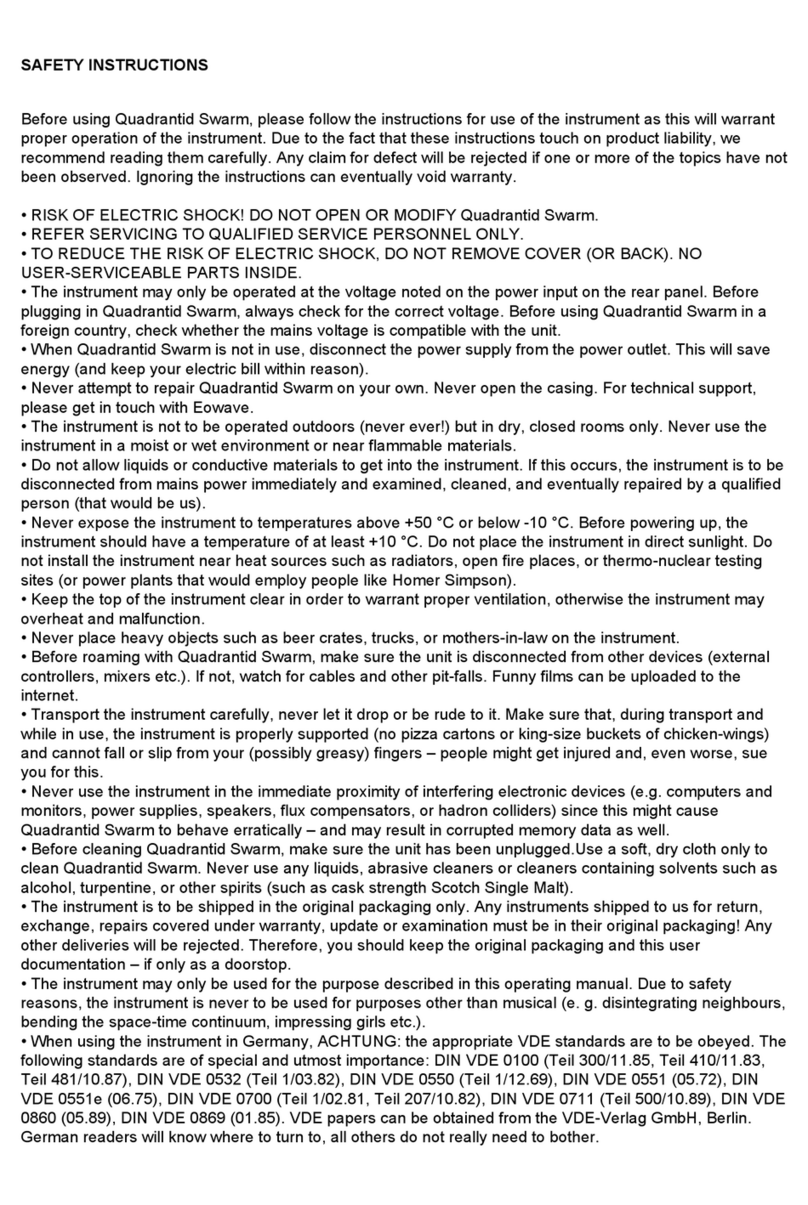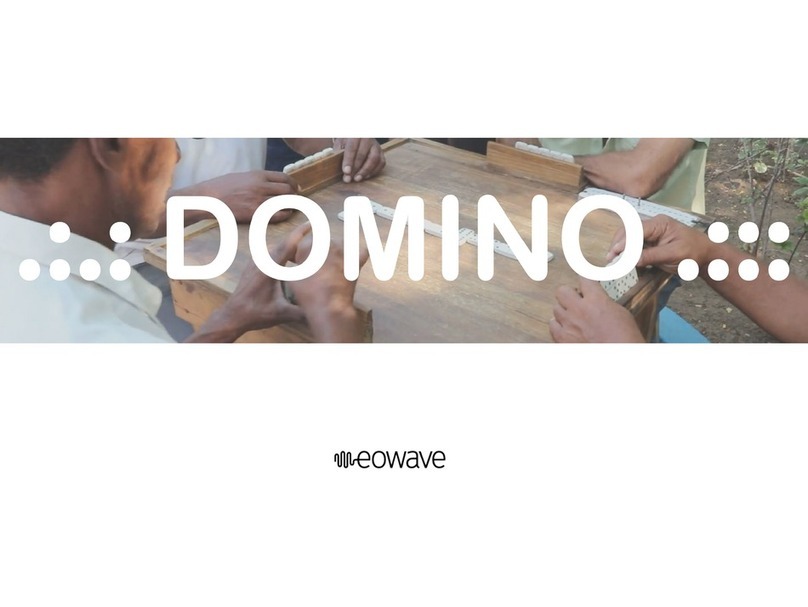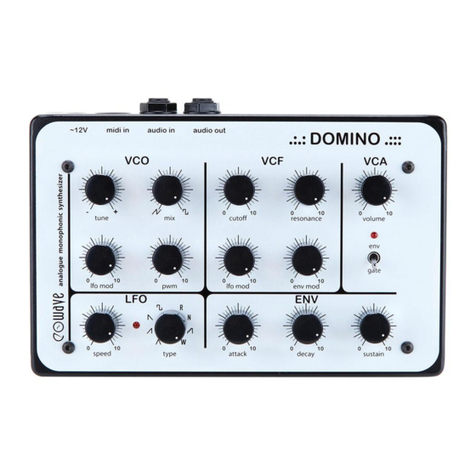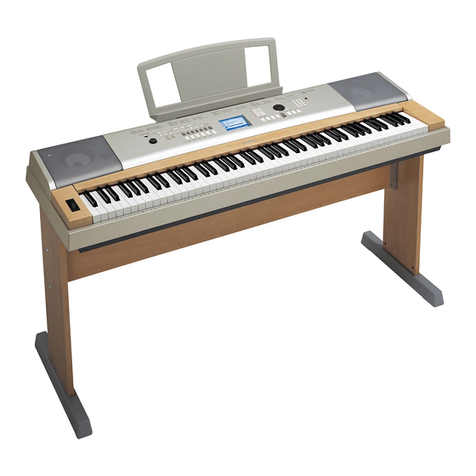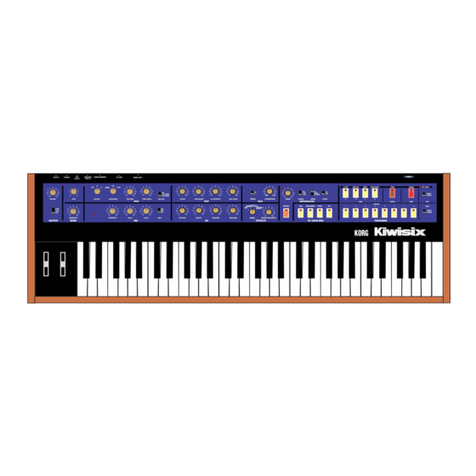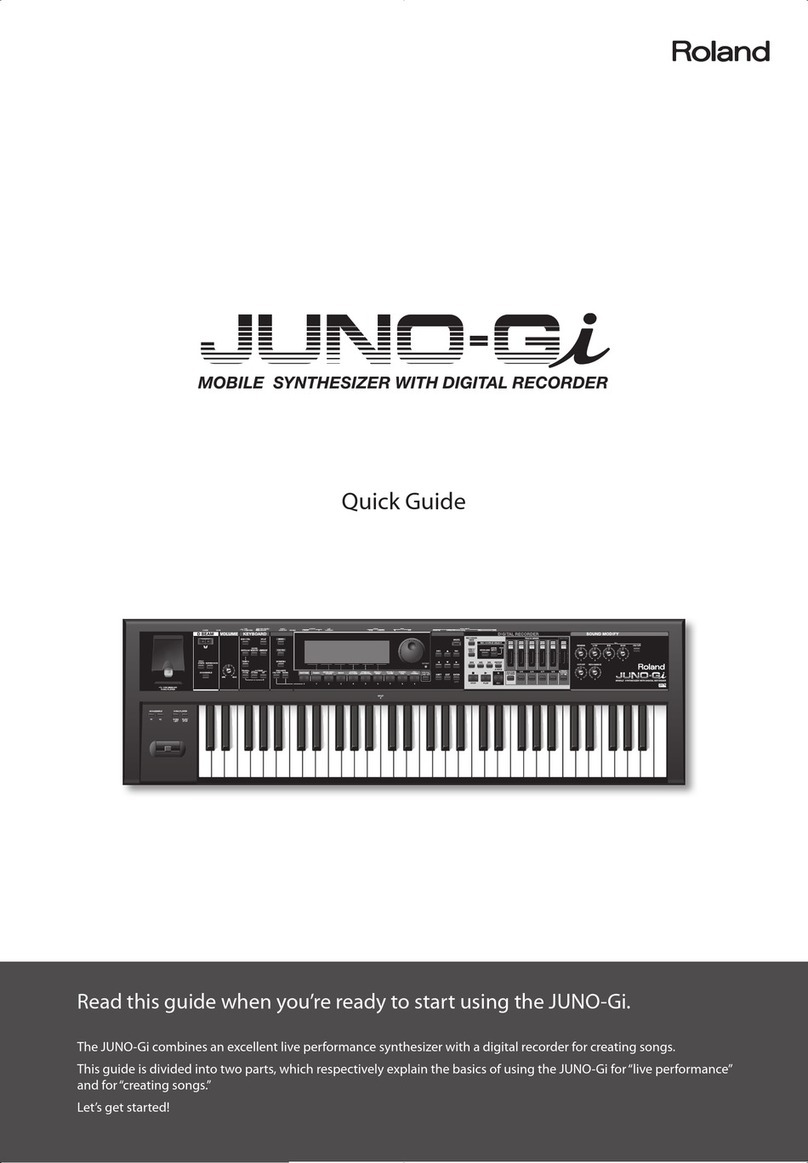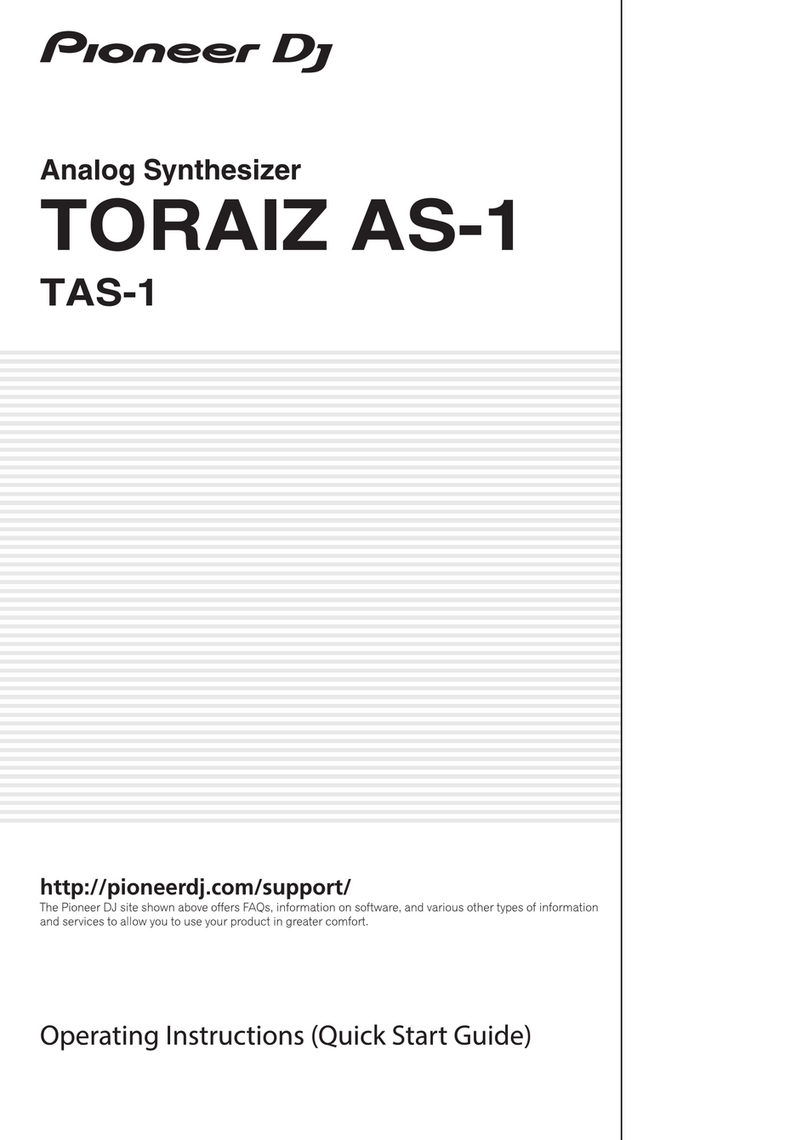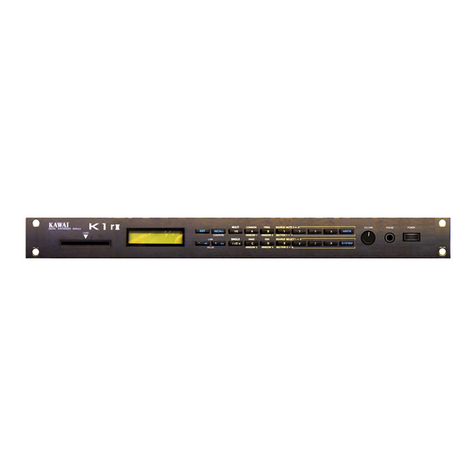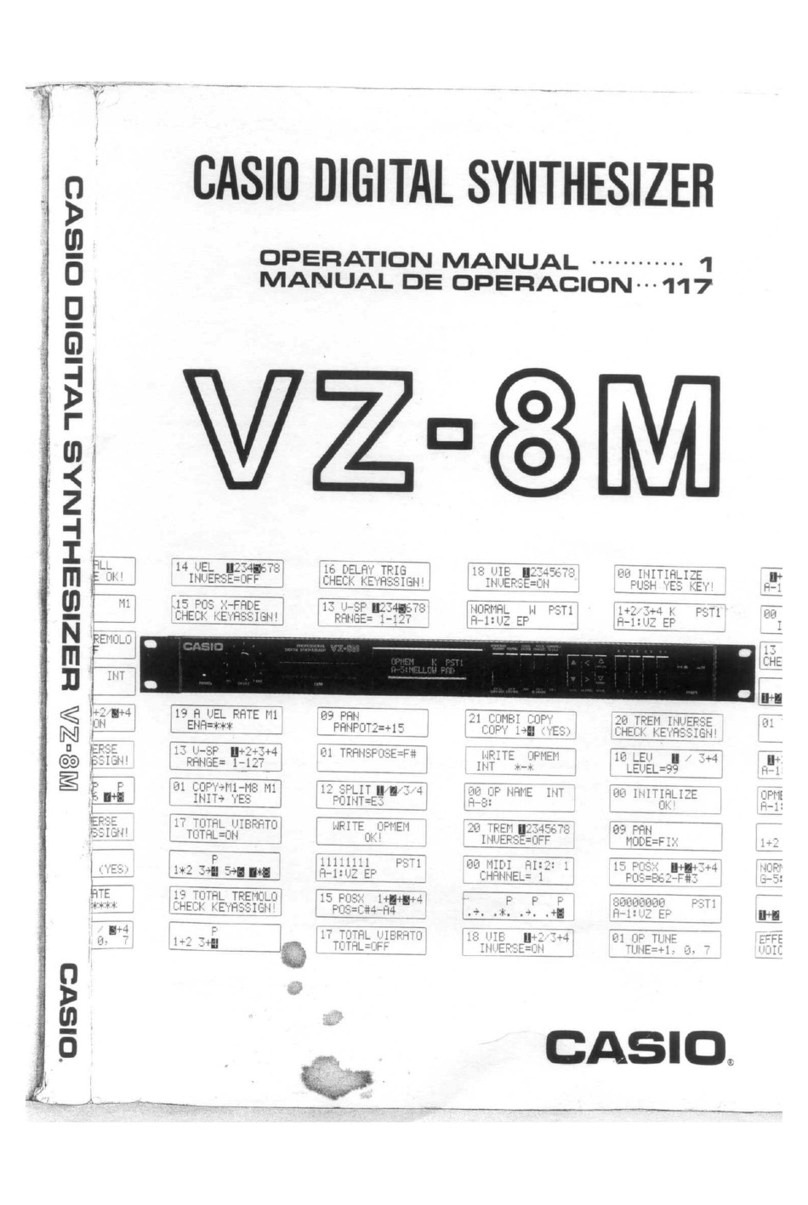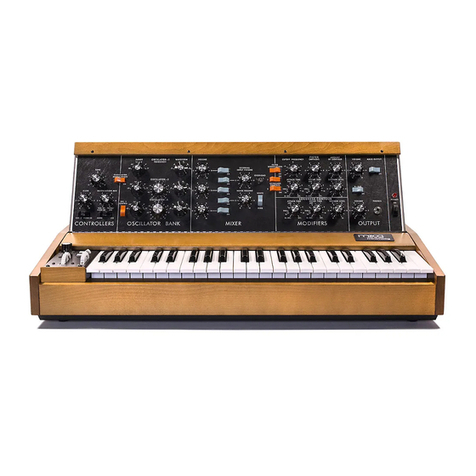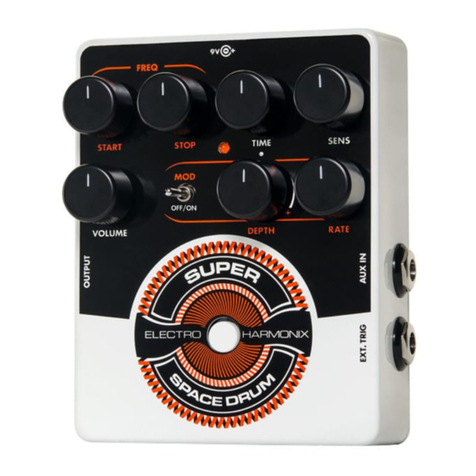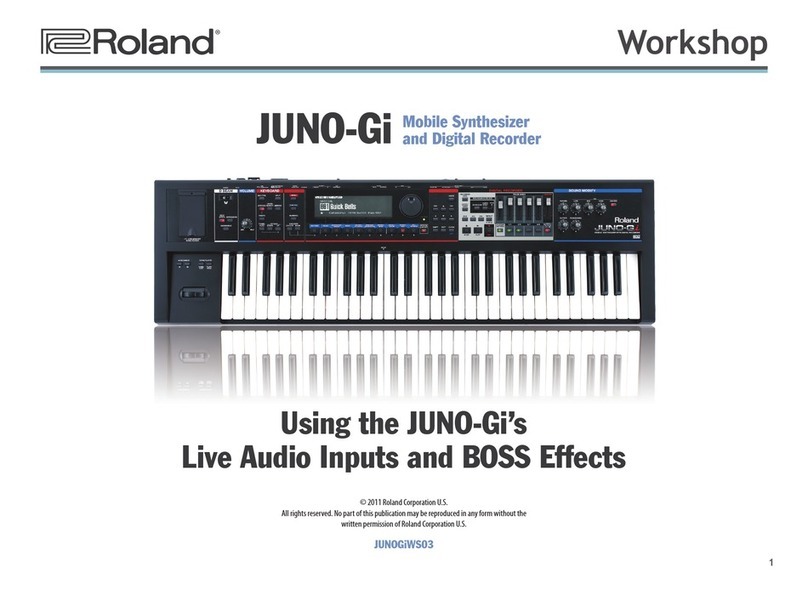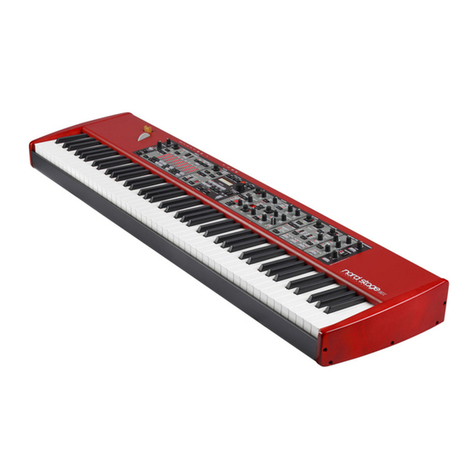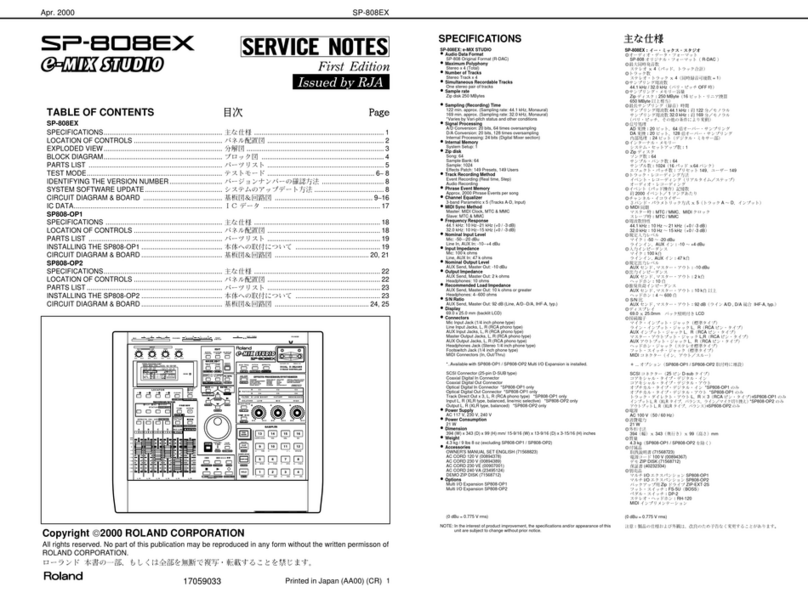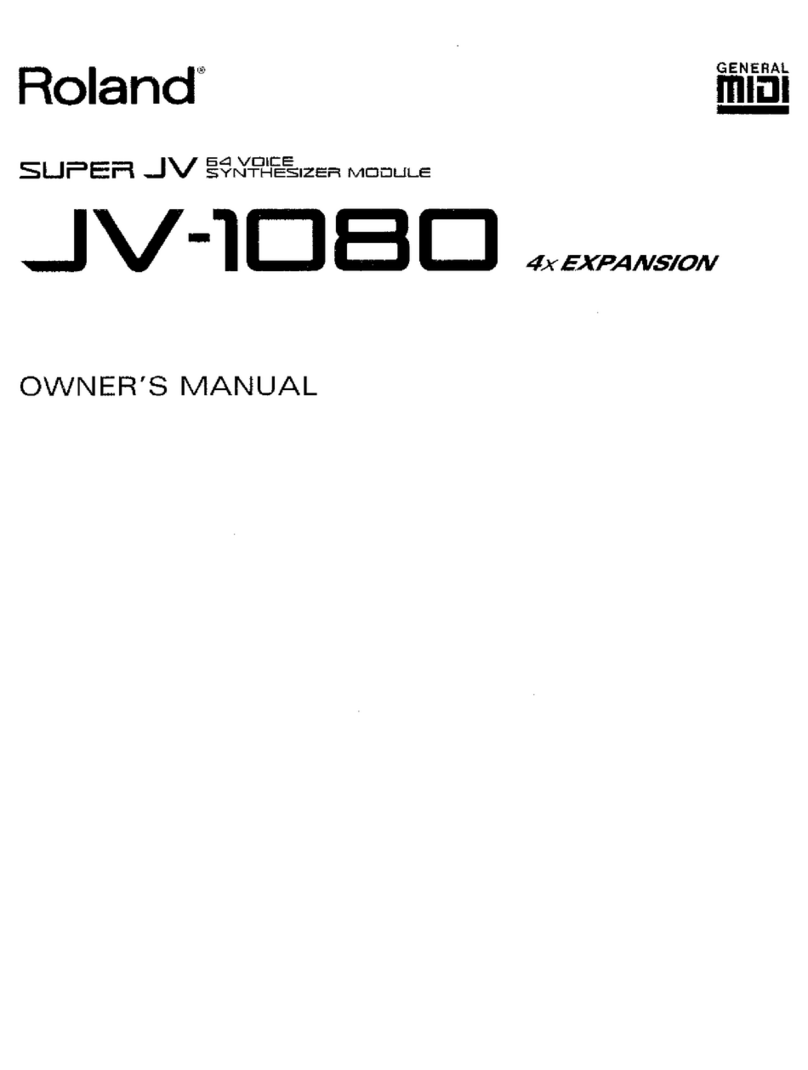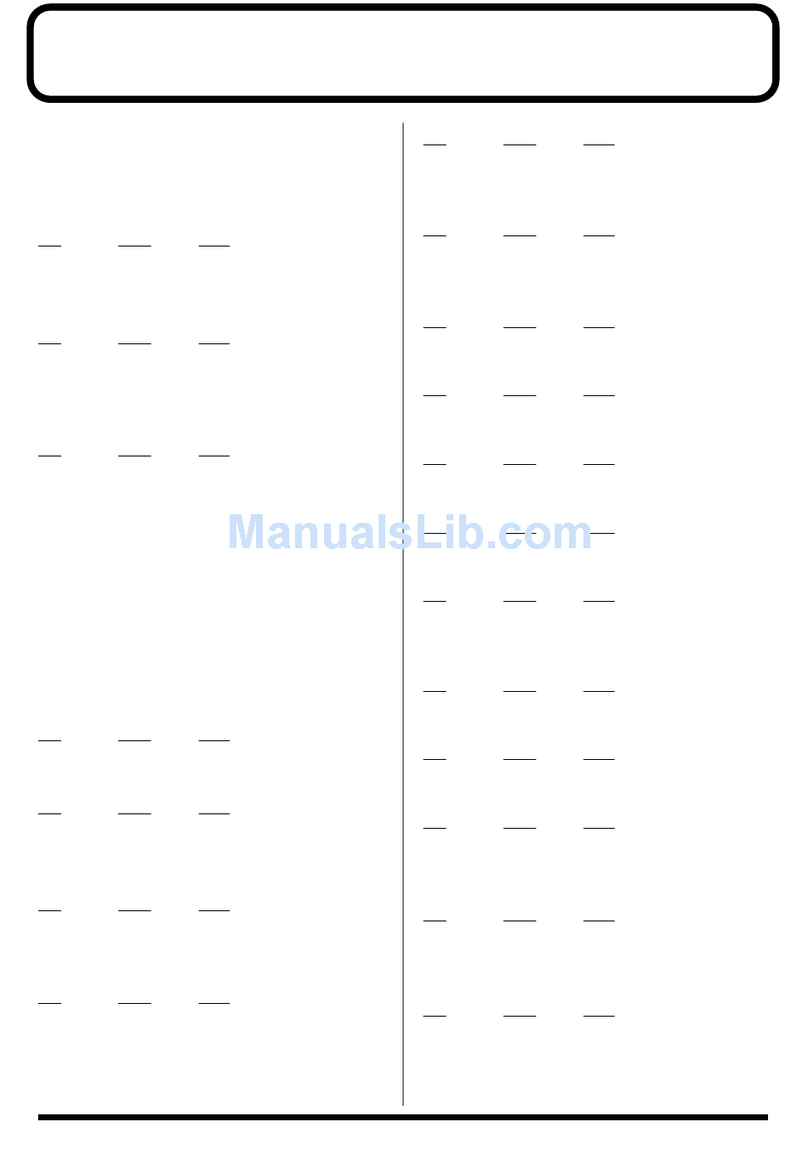Eowave QUADRANTID SWARM User manual

QUADRANTID SWARM
USER MANUAL
EOWAVE

QUADRANTID SWARM
2 3
User manual
SAFETY INSTRUCTIONS
Before using Quadrantid Swarm, please follow the instructions for use of the instrument as this will warrant proper operation
of the instrument. Due to the fact that these instructions touch on product liability, we recommend you reading them care-
fully. Any claim for defect will be rejected if one or more of the topics have not been observed. Ignoring the instructions can
eventually void warranty.
• RISK OF ELECTRIC SHOCK! DO NOT OPEN OR MODIFY Quadrantid Swarm.
• REFER SERVICING TO QUALIFIED SERVICE PERSONNEL ONLY.
• TO REDUCE THE RISK OF ELECTRIC SHOCK, DO NOT REMOVE COVER (OR BACK). NO USER-
SERVICEABLE PARTS INSIDE.
• e instrument may only be operated at the voltage noted on the power input on the rear panel. Before plugging in Qua-
drantid Swarm, always check for the correct voltage. Before using Quadrantid Swarm in a foreign country,check whether the
mains voltage is compatible with the unit.
• When Quadrantid Swarm is not in use, disconnect the power supply from the power outlet. is will save energy (and keep
your electric bill within reason).
• Never attempt to repair Quadrantid Swarm on your own. Never open the casing. For technical support, please get in touch
with Eowave.
• e instrument is not to be operated outdoors (never ever!) but in dry, closed rooms only. Never use the instrument in a
moist or wet environment or near ammable materials.
• No liquids or conductive materials must get into the instrument. If this happens to be the case, the instrument is to be
disconnected from mains power immediately and examined, cleaned, and eventually repaired by a qualied person (that
would be us).
• Never expose the instrument to temperatures above +50 °C or below -10 °C. Before powering up, the instrument should
have a temperature of at least +10 °C. Do not place the instrument in direct sun light. Do not install the instrument near heat
sources such as radiators, open re places, or thermo-nuclear testing sites (or power plants that would employ people like
Homer Simpson).
• Keep the top of the instrument clear in order to warrant proper ventilation, otherwise the instrument may overheat and
malfunction.
• Never place heavy objects such as beer crates, trucks, or mothers-in-law on the instrument.
• Before moving place with Quadrantid Swarm, make sure the unit is disconnected from other devices (external controllers,
mixers etc.). If not, watch for cables and other pit-falls. Funny lms can be uploaded to the internet.
• Transport the instrument carefully, never let it drop or be rude to it. Make sure that, during transport and while in use, the
instrument is properly supported (no pizza cartons or king-size buckets of chicken-wings) and cannot fall or slip from your
(possibly greasy) ngers – people might get injured and, even worse, sue you for this.
• Never use the instrument in the immediate proximity of interfering electronic devices (e.g. computers and monitors, power
supplies, speakers, ux compensators, or hadron colliders) since this might cause Quadrantid
Swarm to behave erratically – and may result in corrupted memory data as well.
• Before cleaning Quadrantid Swarm, make sure the unit has been unplugged.Use a soft, dry cloth only to clean Quadrantid
Swarm. Never use any liquids, abrasive cleaners or cleaners containing solvents such as alcohol, terpentine, or other spirits
(such as Scotch Single Malts in cask strength).
• e instrument is to be shipped in the original packaging only. Any instruments shipped to us for return, exchange, repairs
covered under warranty, update or examination must be in their original packaging! Any other deliveries will be rejected.
erefore, you should keep the original packaging and this user documentation – if only as a doorstop.
• e instrument may only be used for the purpose described in this operating manual. Due to safety reasons, the instrument
is never to be used for purposes other than musical (e. g. disintegrating neighbours, bending the space-time continuum,
impressing girls etc.).
• When using the instrument in Germany, ACHTUNG: the appropriate VDE standards are to be obeyed. e following
standards are of special and utmost importance: DIN VDE 0100 (Teil 300/11.85, Teil 410/11.83, Teil 481/10.87), DIN VDE
0532 (Teil 1/03.82), DIN VDE 0550 (Teil 1/12.69), DIN VDE 0551 (05.72), DIN VDE 0551e (06.75), DIN
VDE 0700 (Teil 1/02.81, Teil 207/10.82), DIN VDE 0711 (Teil 500/10.89), DIN VDE 0860 (05.89), DIN VDE
0869 (01.85). VDE papers can be obtained from the VDE-Verlag GmbH, Berlin. German readers will know
where to turn to, all others do not really need to bother.
QUADRANTID SWARM
Paraphonic synthesiser
We designed the QS for immediate use without having to worry about complex patching, so pre-patching
is used to make connections in logical places. Some of these are highlighted using arrows, particularly the
modulation sources and connections, the audio routing hasn’t been highlighted to keep the design clean but
as expected runsfrom mixer, to lter, to reverb then to VCA.
e VCO section is Digital, while the lters, the VCA and the spring reverb are analog.VCOe QS oers 8
dierent VCO models and an additional percussive soundthe VCO has 3 parameters, Freq, Spread Character.
e Percussive sound has one parameter, perc which determines the length of the percussion decayFreq :
controls the base pitch of the VCOs. It can be modulated by the CV in input associated to it’s attenuator :
MIXER
VCF 1
low-pass/hi-pass VCA
SPRING
VCF2
low-pass
LFO
perc
8 VCOs
Slew
ENV Noise
Signal ow
OUT

QUADRANTID SWARM
4 5
User manual
freq mod.
Spread : this function only works in monophonic mode.
It controls the frequency ratio between the 8 VCOs.Depending on the model this ratio can be harmonic
(organ and string) or inharmonic (the others).Character : this parameter has dierent
functions depending on the VCO model Organ, String, Drone, Reed :
it determines the amount of signal passing thru a wavefolder.
e more character you add the more distorted yousound will be.
Metal : it adjust the amount of modulation the modulating oscillator has on the 8 main VCOs Chiptune :
it adjust the amount of modulation the modulating LFO has on the pluse width of th 8 main VCOs
Grains, Noise : it adjust the amount of short delay.
To switch between models,
press shift and the dedicated touch key :
- Organ => 8 sine VCOs
- Strings => 8 saw VCOs
- Drone => 8 triangle VCOs
- Reed => 8x2 VCOs the second VCO is slighly detuned
- Metal => 8 sine VCOs with an additionnal 9th that
modulate the frequency of the other VCOs.
- Chiptune => 8 square vcos with pulse width modulation
- Grain => 8 granual generators bases on sine wavelets
- Noise => digital pitched noise
Filter
e Signal coming from the VCO’s is feed into a 3 inputs mixer.
You can mix the main VCO, the percussion VCO and an external signal.
By default input 3 in connected to the output of the reverberation. e 2 12dB lters are
connected in serial. Filter 1 can be switched between Low pass and Hi pass. Filter 2 is low-pass only.
You can control the individual frequency and amount of resonance for each lter. An extra Modulation
input associated with it’s attenuator can modulate the Filter’s frequency. By default Filter 1
modulation is connected to the envelope , and lter 2 modulation to the LFO.
VCA
e VCA has an audio input, a control and an audio output.
By default the envelope is connected to the VCA control. If you want to generate drones,
you should connect a constant positive voltage 0-10V to the VCA input.You can also use very long
attack and release times with a slow sequence. Spring Reverb e VCA has an audio input, a control
and an audio output. You can externally control the amout of reverberation by the mod input.
By default the Reverberation output is connected to the third input of the mixer.
at allow you to create some feedback eects.
Modulations
ee modulation sources unlock the expressivity of the synth.
e rst is an envelope, pre-patched to the cuto on lter pole 1.
Envelope
the envelope oers 2 modes of operation AR and AD in AR mode (attack/release) it’s trigger input acts as a
gate. e envelope stays open until the gate is released. In AD mode (attack/decay) the envelope continues up
to the end of it’s cycle even if the gate is released. If you want to play chords we suggest you to use AR mode
and if you play with the sequencer the AD might give better results.

QUADRANTID SWARM
6 7
User manual
LFO
e LFO section is pre-patched to cuto pole 2 and features seven selectable waveforms :
triangle , sine, ramp down , ramp up , and 3 dierent random modes. the 8th selection which is the sequencer
CV out (allowing the sequencer to be patched to other compatible devices). Speed is set using the ‘speed’
knob. An additional square output has been included which can be useful for triggering clock resets.
e square pulse widht is determinated by the LFO waveform, the random mode won’t give you
a perfect square.A slew limiter (with CV signal in and out) enable you to round the waveforms
coming from the LFO. By defaut the main LFO output is connected to the slew in.
Polyphonic Mode
By holding shift and pressing the start button you can switch for monophonic
mode to polyphonic mode.In polyphonic mode the spread mode will have no function.
Each of the 8 VCOs is controlled by the 8 touch keys. e individual frequency
of each vco is controlled by the potentiometers above each key.
Each VCO has his onw VCA controlled by the touch key.
Sequencer
e internal sequencer oers you 8 steps.
On each step you can control the CV and the gate.
To active a gate, simply press on the touch keyboard.
To change the pitch use the individual potentiometers on each step.
e CV is internally connected to the VCO’s frequency. And the gate output to
the gate of the envelope. It is not possible to control an external sound source from the internal sequencer
except by using the 8’s preset on the LFO. In this mode you will have the sequencer output with a 0-5v
range. It’s speed is controlled by the LFO and not the Sequencer’s clock. e sequencer clock has
its individual output. To sync the sequencer to an external clock , use the clock input.
A trigger signal at the reset input reset the sequence to step 1.
e start button enables you to start and stop the sequence.
Noise
A noise output gives you an additional modulation source
MIDI implementation
by default the QS responds to MIDI channel 1.
to change the MIDI channel simply press SHIFT while powering up the unit.
Send a note on the new midi channel. And press START to validate your choice.
e new MIDI channel will be stored in the internal memory. By pressing the 8th key (noise)
you can also activate the external MIDI clock. It will be available at the clock output.
e QS response also to MIDI CC for a couple of parameters CC1 to CC6 will add some
modulations to lfo Speed, spread, fold, perc, attack and decay.
e Ccs are added to the current potentiometer value.

QUADRANTID SWARM
8 9
User manual
Patchnotes
1 : ..................................................................................................................
2 : ..................................................................................................................
3 : ..................................................................................................................
4 : ..................................................................................................................

QUADRANTID SWARM
10 11
User manual
5 : ..................................................................................................................
6 : ..................................................................................................................
7 : ..................................................................................................................
8 : ..................................................................................................................
Patchnotes
Table of contents
Other Eowave Synthesizer manuals

